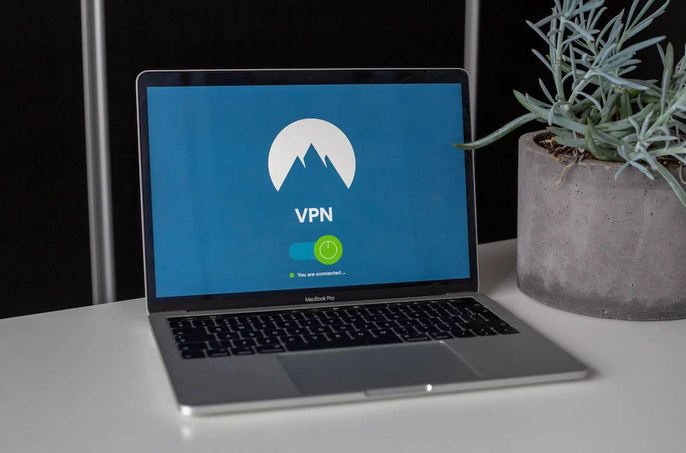
Why Tech Burnout Is the Silent Epidemic in Remote Work
As we navigate the digital landscape of remote work, a silent epidemic has emerged: tech burnout. It creeps in unnoticed, often disguised as fatigue or stress from long hours spent behind screens. In an era where technology drives our professional lives, it’s easy to overlook the toll it can take on mental health. The boundaries between work and personal life blur, leaving many overwhelmed. With constant notifications, virtual meetings, and endless emails, the pressure mounts. While technology offers us incredible tools for productivity and connection, it also demands our unwavering attention. As remote workers adapt to this new normal, understanding tech burnout becomes essential for maintaining well-being amidst the chaos. Let’s dive deeper into what tech burnout entails and uncover practical strategies to combat this growing challenge in our increasingly connected world.
Understanding Burnout and Its Effects
Burnout is more than just feeling tired after a long day. It’s a state of emotional, physical, and mental exhaustion caused by prolonged stress. When individuals are pushed beyond their limits without adequate support or recovery time, burnout can set in. The effects range from decreased productivity to heightened anxiety. It can cloud judgment and diminish creativity, making even simple tasks feel overwhelming. Relationships suffer too; communication with colleagues may break down as frustration mounts. Many overlook the signs until they reach a breaking point. This silent struggle often leads workers to disengage completely from their roles, impacting not only personal well-being but also team dynamics and company culture. Understanding the nuances of burnout is vital for addressing it effectively—especially in remote work environments where isolation can amplify feelings of disconnection and fatigue.
Factors Contributing to Tech Burnout in a Remote Setting

Remote work offers flexibility, but it also blurs the lines between personal and professional life. This constant connectivity can lead to overwhelming expectations. The reliance on technology creates a unique pressure. Employees often feel they must respond immediately to messages or emails. This urgency contributes significantly to stress levels. Isolation is another factor at play. Without face-to-face interactions, remote workers may feel disconnected from their teams. Loneliness can exacerbate feelings of burnout over time. Distractions in home environments add another layer of complexity. From household chores to family responsibilities, these interruptions can hinder focus and productivity. The lack of structured routines makes it harder for individuals to disengage from work. As boundaries fade away, the risk of tech burnout increases substantially in remote settings.
Signs of Burnout and How to Recognize Them
Burnout can sneak up on you, often disguised as stress or fatigue. Being aware of its signs is crucial for early intervention. One common indicator is a constant feeling of exhaustion that doesn’t improve with rest. You might find yourself losing motivation and interest in tasks you once enjoyed. Another sign includes irritability or mood swings that affect how you interact with colleagues. This emotional drain can manifest as increased cynicism about your work and responsibilities. Physical symptoms shouldn’t be overlooked either. Frequent headaches, stomach issues, or sleep disturbances are all red flags indicating something deeper may be at play. If you’re struggling to concentrate or make decisions, it’s time to take a step back and assess your mental health. Recognizing these signals early allows for better management strategies before burnout takes hold completely.
Strategies for Preventing and Managing Burnout in a Remote Environment

Creating clear boundaries is essential. Designate specific work hours and stick to them. This helps maintain a healthy separation between professional and personal life. Regular breaks are vital. Step away from your screen every hour, even if just for a few minutes. Stretch, grab a snack, or take a brief walk outside when possible. Mindfulness practices can be beneficial too. Simple techniques like deep breathing or meditation help center your thoughts and reduce stress levels. Fostering connections with colleagues is key in remote settings. Schedule casual virtual coffee chats to strengthen relationships without the pressure of meetings. Prioritize self-care activities that bring you joy—reading, cooking, or even indulging in hobbies can recharge your energy and creativity during those long tech-filled days.
The rise of remote work has transformed the way we approach our jobs. While it offers flexibility and convenience, it also brings challenges that often go unnoticed. Tech burnout is one such challenge, creeping into our lives silently but with significant impact. As we navigate this new landscape, embracing strategies to safeguard mental well-being is not just beneficial—it’s necessary for sustainable productivity in the tech-driven world we inhabit today. The future of work hinges on how well we take care of ourselves amidst the constant demands technology presents us with each day.

Why Using a VPN Service Is Essential for Enjoying Streaming Services
Streaming services have revolutionized the way we consume entertainment. However, geo-restrictions and content blocking can make it difficult to access some streaming platforms. VPNs (Virtual Private Networks) are a handy tool granting access to iptv services in these restricted areas. In this article, we’ll explore why using VPNs is essential for enjoying streaming services.
Overcoming Geo-Restrictions
 One of the primary reasons why using a VPN is essential when enjoying streaming services is to overcome geographic restrictions. Some streaming services, such as Netflix, have different content libraries depending on the country you’re accessing them from. With a VPN, you can connect to a server in a foreign country, accessing content that might otherwise be unavailable in your region. This means you can enjoy the full range of streaming content available globally.
One of the primary reasons why using a VPN is essential when enjoying streaming services is to overcome geographic restrictions. Some streaming services, such as Netflix, have different content libraries depending on the country you’re accessing them from. With a VPN, you can connect to a server in a foreign country, accessing content that might otherwise be unavailable in your region. This means you can enjoy the full range of streaming content available globally.
Privacy Protection
In addition to providing access to restricted content, a VPN offers privacy protection when streaming. Without a VPN, all your online activities, including the movies and shows you stream, are exposed to your ISP (Internet Service Provider). A VPN encrypts your internet traffic and masks your IP address, making it difficult for third parties to track your online activities. This added layer of security ensures that your private information stays safe while streaming.
Bypassing Censorship

Some countries may restrict access to certain streaming services or censor content based on their political or cultural beliefs. For example, in China, popular streaming services like Netflix and Amazon Prime are not accessible. With a VPN, you can bypass censorship and access these services, even in countries where they are blocked. This means you can enjoy your favorite shows and movies regardless of location.
Speed and Performance
Another significant benefit of using a VPN when enjoying streaming services is that it can improve your speed and performance. Many ISPs limit bandwidth for certain streaming services, resulting in slow loading times and buffering. With a VPN, you can choose servers optimized for streaming, ensuring faster speeds and smoother playback. This means you can enjoy your favorite shows and movies without frustrating lagging or buffering.
In conclusion, using a VPN is essential for enjoying streaming services. It allows you to overcome geo-restrictions, protects your privacy, bypasses censorship, and improves speed and performance. Whether you’re looking to access your favorite shows and movies from another region or protect your privacy while streaming, a VPN can help you achieve your goals. With so many VPN services now available, choosing the right one that offers fast, reliable connections and robust privacy protection is essential.


